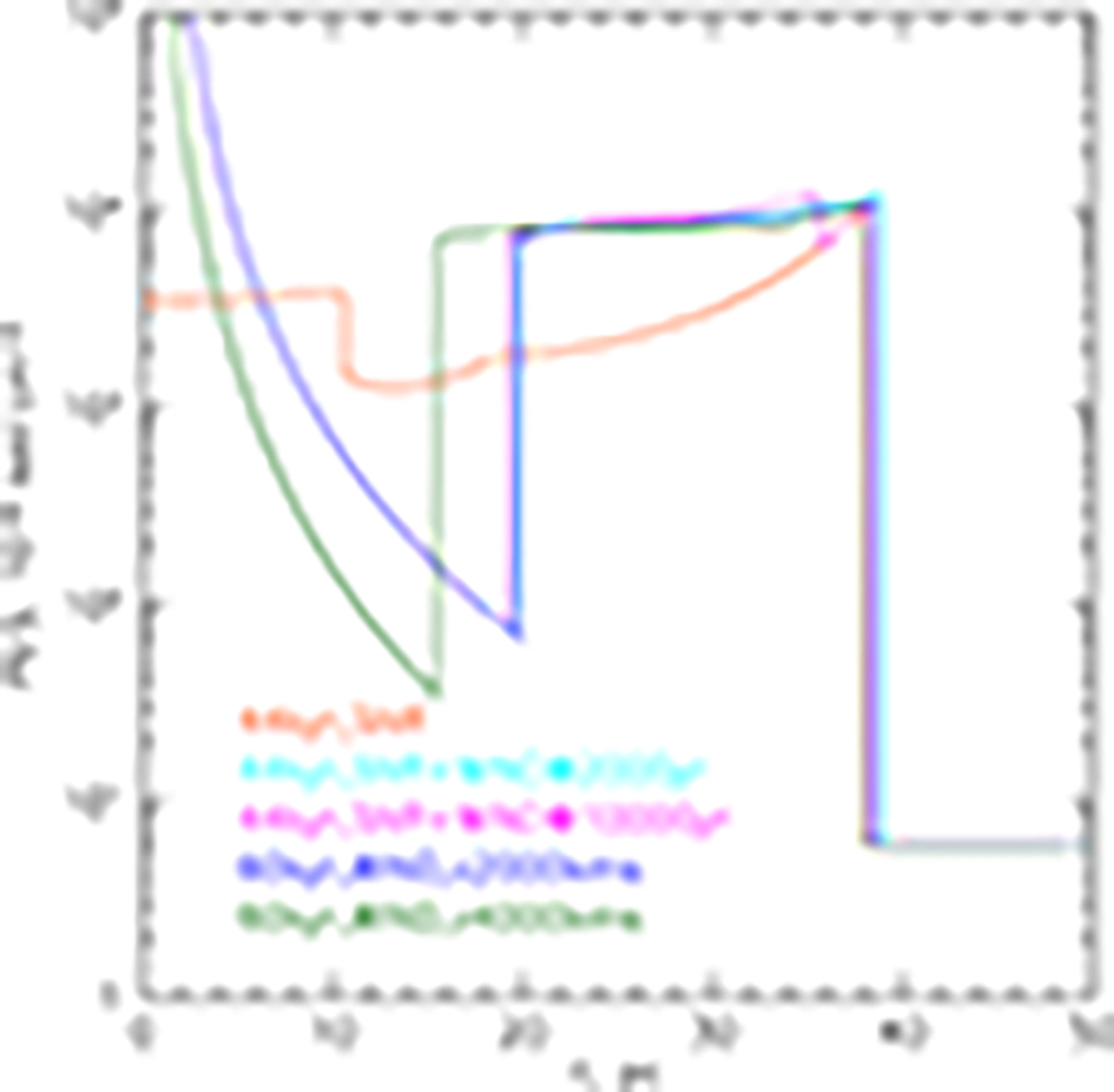Fig. B.1.

Download original image
Comparison of the gas-pressure profiles for cases with and without a prior supernova explosion. The blue line shows the case of the isotropic wind operating for 60 kyr in a uniform medium (same as shown in Fig.1). The red line shows the pressure profile that would appear if a type II supernova (ejecta mass 20 M⊙, ejecta kinetic energy 1051 erg) exploded in the same environment. In this case, the forward shock would reach the same radius in ∼44 kyr. The edges in the red curve at radii between 10 and 20 pc are the artifacts of the 1D model caused by the reflection of the reserve shock from the center. Finally, the cyan and magenta lines show the pressure profiles when the wind starts to operate 2000 and 10,000 yr after the SNR explosion, respectively. In these cases, the profiles shown correspond to 44 kyr since the onset of the supernova. In all cases, a large pressure jump is present at the position of the wind termination shock. The only noticeable effect of the SNR is that the forward shock reaches r ∼ 40 pc in a shorter time (44 kyr vs. 60 kyr). Finally, the green line shows the case of a twice faster wind (4000 vs 2000 km s−1). As expected, the position of the termination shocks moves closer to the source. Comparison of the gas-pressure profiles for cases with and without a prior supernova explosion. The blue line shows the case of the isotropic wind operating for 60 kyr in a uniform medium (same as shown in Fig.1). The red line shows the pressure profile that would appear if a type II supernova (ejecta mass 20 M⊙, ejecta kinetic energy 1051 erg) exploded in the same environment. In this case, the forward shock would reach the same radius in ∼44 kyr. The edges in the red curve at radii between 10 and 20 pc are the artifacts of the 1D model caused by the reflection of the reserve shock from the center. Finally, the cyan and magenta lines show the pressure profiles when the wind starts to operate 2000 and 10,000 yr after the SNR explosion, respectively. In these cases, the profiles shown correspond to 44 kyr since the onset of the supernova. In all cases, a large pressure jump is present at the position of the wind termination shock. The only noticeable effect of the SNR is that the forward shock reaches r ∼ 40 pc in a shorter time (44 kyr vs. 60 kyr). Finally, the green line shows the case of a twice faster wind (4000 vs 2000 km s−1). As expected, the position of the termination shocks moves closer to the source.
Current usage metrics show cumulative count of Article Views (full-text article views including HTML views, PDF and ePub downloads, according to the available data) and Abstracts Views on Vision4Press platform.
Data correspond to usage on the plateform after 2015. The current usage metrics is available 48-96 hours after online publication and is updated daily on week days.
Initial download of the metrics may take a while.


